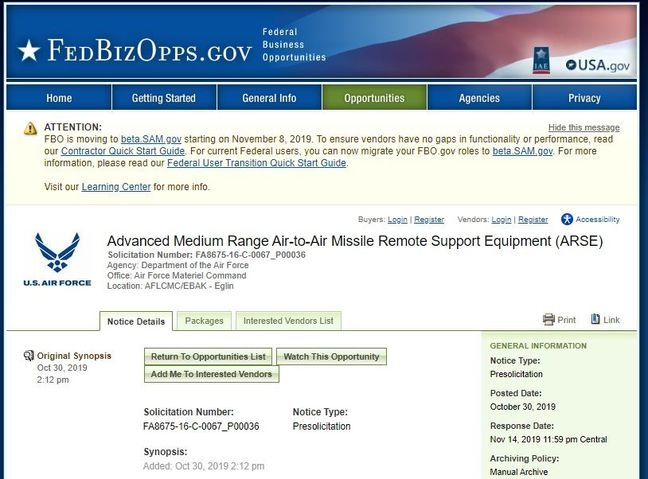Nonprofit Defending Digital Campaigns (DDC) offers security services for email, user education, mobile, and encrypted communications, to federal election committees.
A nonprofit co-founded by former campaign managers for Hillary Clinton and Mitt Romney officially launched this week to provide free or low-cost security technology and services to federal election campaigns.
Defending Digital Campaigns (DDC) basically acts as an intermediary to negotiate software licenses and service contracts from security vendors and providers and to ensure the tools are properly installed and used.
DDC initially is offering registered political party committees and federal candidates email security services from Agari, anti-phishing services from Area 1 Security, online IT security training from Cybrary, security behavior change services from Elevate Security, managed security services from GRA Quantum, mobile endpoint security software from Lookout, and end-to-end encrypted messaging services from Wickr.
Michael Kaiser, DDC’s president and CEO, says the nonprofit will package some of the security services for election organizations. “We will also create groups of products specifically for campaigns,” he says.
Election security overall has been a hot button topic in the wake of Russia’s election-meddling and hacking voter rolls during the 2016 presidential election cycle, as well as subsequent research demonstrating major security holes in voting systems and equipment. Security experts say Web-based election systems are the most likely and easiest targets for attack during the elections: Election-reporting websites, voter roll websites, and candidate websites all are at risk of disruption via distributed denial-of-service (DDoS) attacks, as well as hacking and data-tampering by nation-state or other attackers.
It’s easier for an attacker to remotely penetrate a public-facing website to DDoS it, deface it, alter information (such as changing vote count data or polling place information), or access sensitive data stored on its back-end servers than to bother tampering with a voting machine.
Romney Clinton Campaign Roots
DDC was founded by Matt Rhoades, former campaign manager for Mitt Romney, and Robby Mook, former campaign manager for Hillary Clinton, whose organizations both experienced cyberattacks during their campaign tenures. For now the nonprofit is focused on the federal level of election organizations; it received approval in May from the Federal Election Commission (FEC) to offer the free and discounted cybersecurity services in order to help beef up US election security.
“The campaign ecosystem … from my perspective has gotten less attention than the voting machine issue,” DDC’s Kaiser says. “Campaigns have to understand, like other businesses, they are a target — for nation-states, hacktivists, and cybercriminals after high-wealth individuals and donor information.”
One example of the cyber-risk to federal elections was the 2016 discovery by Recorded Future of a data breach of the US Election Assistance Commission (EAC), which tests and certifies voting equipment, runs a clearinghouse on elections, and provides the National Voter Registration form. A Russian hacker was spotted looking for buyers for the credentials to the EAC database two weeks before the election. Levi Gundert, vice president of intelligence and risk at Recorded Future, says that attack was a red flag.
“EAC is where voting administrators go to get the latest updates they need to administer their voting centers,” he explains. “A lot of times they’re downloading [data] and taking it on thumb drives to sneakernet to voting machines. There’s absolutely the potential to plant something malicious.”
Joseph DePlato, security researcher and co-founder and CTO of Bluestone Analytics, says secure campaigns are key to ensuring voters get accurate and sufficient information.
“I’m hoping [DDC] will be a catalyst for better security and visibility across the entire spectrum of election technologies and processes,” he says. “From a voter point of view, I’m concerned with the actual election security versus the campaign security. For example, if voting machines can be compromised and votes changed, that is a direct threat to democracy that should concern every citizen.”
But if a campaign is compromised, he says, nation-states could abuse breached documents to wage a social-media influence attack. “But there is no direct threat to local voting machines or processes,” he says.
Security vendors traditionally have struggled with how to assist federal election organizations, notes Joel Wallenstrom, CEO of Wickr. “A lot of companies have been trying hard to help out with this problem, but they mostly ran into brick walls,” he says. “You had to understand the political processes” and how to get FEC approval in accordance with campaign finance laws. Working via DDC paves the way for security vendors to offer security help to federal election committees, he says.
DDC is not yet publishing specific discounts for the security products it’s offering, but says some are free and others are discounted as deeply as 50% or more. All registered national political party committees and federal candidate committees are eligible for cybersecurity help via DDC, as is a House candidate committee with a minimum of $50,000 in receipts for the current election cycle, a Senate candidate committee with a minimum of $100,000 in receipts for the current election cycle, and a presidential candidate’s committee if he or she is polling above 5% in national polls.
Kaiser says the DDC currently has a few House of Representatives’ campaigns as its early adopters, and he expects things to ramp up in early 2020 in the run-up to the fall election. “Our initial focus is on the network of people running campaigns every day for committees and parties and to understand their needs,” he says.
Meanwhile, several cybersecurity vendors, including big-name vendors like Google, Microsoft, Cloudflare, and McAfee, in the run-up to the 2018 election offered free security services, such as website and user-account protection services to state and local election jurisdictions and campaigns.
Up Next: MFA
Among the next technologies DDC hopes to add is multifactor authentication (MFA), according to Kaiser.
That plays into the attacks that occurred in the 2016 election. “In part we’re informed by what we saw in the last election, so it’s going to be a lot of basic blocking and tackling [at first],” Wickr’s Wallenstrom says. “Having two-factor authentication out there, people understanding it’s smart to update the operating system on their devices,” for example, he explains.
DDC, meanwhile added new members to its board this week: Ron Gula, president and co-founder of Gula Tech Adventures; Alan Blue, co-founder of LinkedIn; and Suzanne Spalding, former DHS undersecretary for the National Protection and Programs Directorate (NPPD). They join DDC board chair and co-founder Debora Plunkett, former director of the NSA Information Assurance Directorate.
Related Content:

This free, all-day online conference offers a look at the latest tools, strategies, and best practices for protecting your organization’s most sensitive data. Click for more information and, to register, here.
Kelly Jackson Higgins is the Executive Editor of Dark Reading. She is an award-winning veteran technology and business journalist with more than two decades of experience in reporting and editing for various publications, including Network Computing, Secure Enterprise … View Full Bio
Article source: https://www.darkreading.com/cloud/free-and-discounted-security-services-now-available-for-us-election-orgs/d/d-id/1336247?_mc=rss_x_drr_edt_aud_dr_x_x-rss-simple





 Check out
Check out 


